Small Dog Breeds Who Don’t Bark: Quiet Companions for Any Home
Many people want small dogs that are quiet and don’t bark much. Small breeds are often lively and vocal, but some naturally make fewer noises. This makes them better for living in close spaces like apartments or for owners who prefer less noise.

Small dog breeds that don’t bark often provide a calm and peaceful environment without giving up the companionship of a pet. These dogs can still be playful and affectionate while keeping noise levels low. Understanding which breeds tend to be quieter helps people choose a dog that fits their lifestyle.
1) Basenji
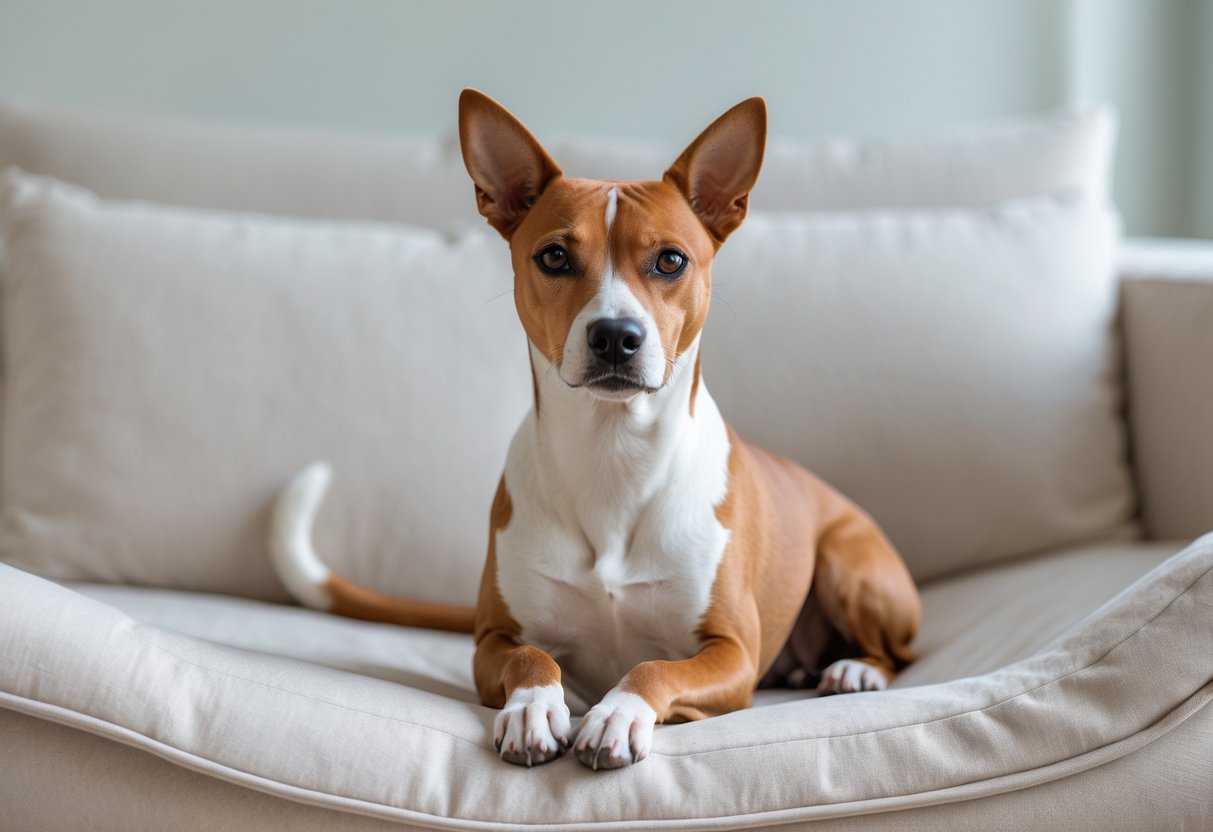
The Basenji is a small to medium-sized dog originally from Africa. It is often called the “barkless dog” because it does not bark like most dogs. Instead, it makes a unique yodel-like sound.
This breed’s larynx is shaped differently, which stops it from barking normally. Basenjis communicate with sounds like yodels, howls, and growls. They are known to be clean, quiet, and odorless dogs.
Basenjis are active and intelligent, making them good pets for people who enjoy an energetic companion. Despite their quiet nature, they are expressive and alert, showing their feelings through different noises and body language.
2) Shih Tzu

The Shih Tzu is a small dog breed known for its calm and friendly nature. It does bark but usually only when necessary, making it a quiet companion.
This breed enjoys being around people and adapts well to apartment living. The Shih Tzu’s coat requires regular grooming, but it sheds very little.
Because of its gentle temperament, the Shih Tzu is often chosen by families and individuals who want a low-noise pet. It thrives with attention and consistent care.
3) Cavalier King Charles Spaniel

The Cavalier King Charles Spaniel is known for being calm and gentle. It usually does not bark much, making it a good choice for quiet homes or apartments. This breed enjoys playing and resting rather than making noise.
They are friendly and affectionate dogs that get along well with families and children. Their size is small, typically weighing between 11 and 18 pounds. Although they do shed, the amount of shedding is manageable due to their size.
This breed was originally bred as a lapdog for royalty, which may explain its quiet nature. They are easy to train and adapt well to different living environments.
4) Bichon Frise

The Bichon Frise is a small dog breed known for being gentle and quiet. It does not bark much and usually only vocalizes when needed. This makes it a good choice for people living in apartments or close neighborhoods.
They have a soft, curly coat that does not shed much. However, regular grooming is needed to keep their hair from matting or covering their eyes.
Bichon Frises are friendly and enjoy being around people. They are alert but tend to stay calm, rarely barking without reason. This breed suits those who want a companion that is both affectionate and low-noise.
5) Chinese Crested
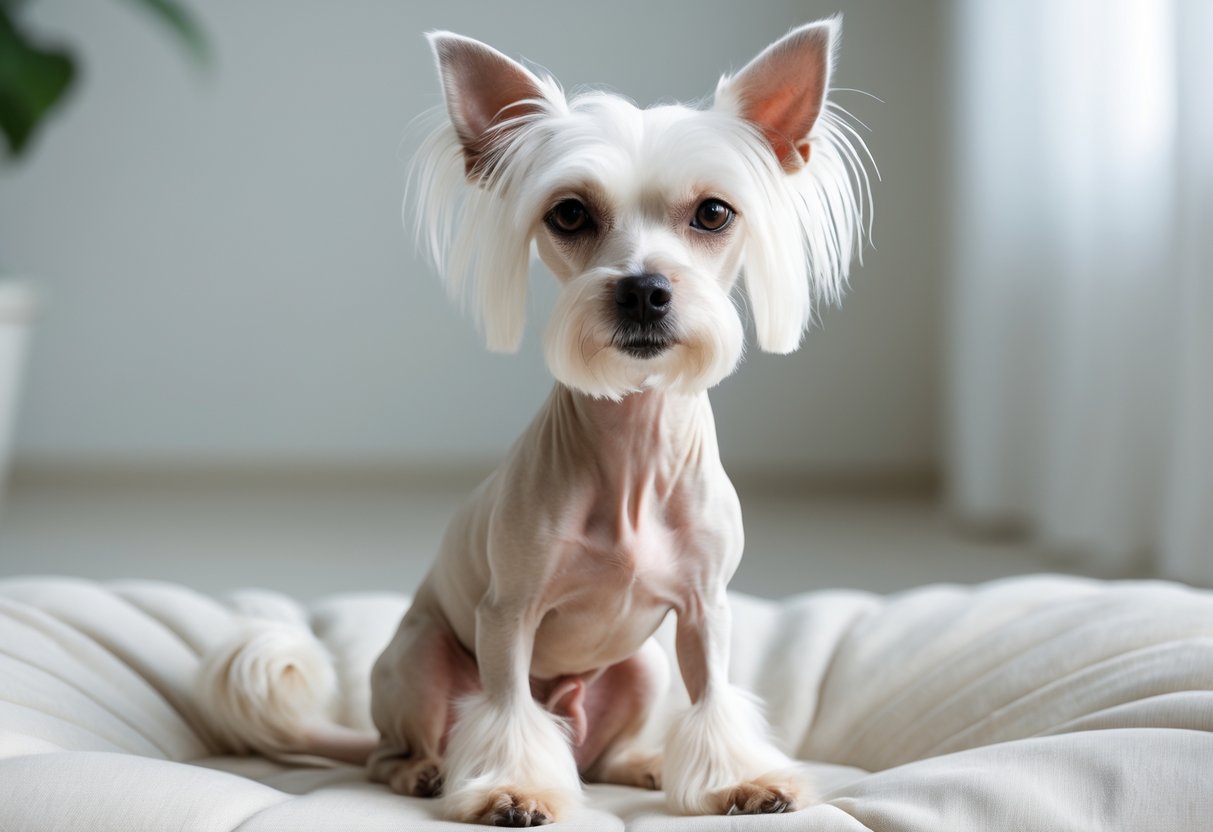
The Chinese Crested is a small dog breed known for being quiet and calm. It rarely barks and usually only alerts its owner to real threats.
There are two types: hairless, with fur on the feet, tail, and head, and powderpuff, which has a soft, full coat. Both types shed very little and need minimal grooming.
This breed is friendly and affectionate. It enjoys being a lap dog and prefers resting quietly most of the day. The Chinese Crested is a good choice for people who want a small, low-noise companion.
6) Maltese
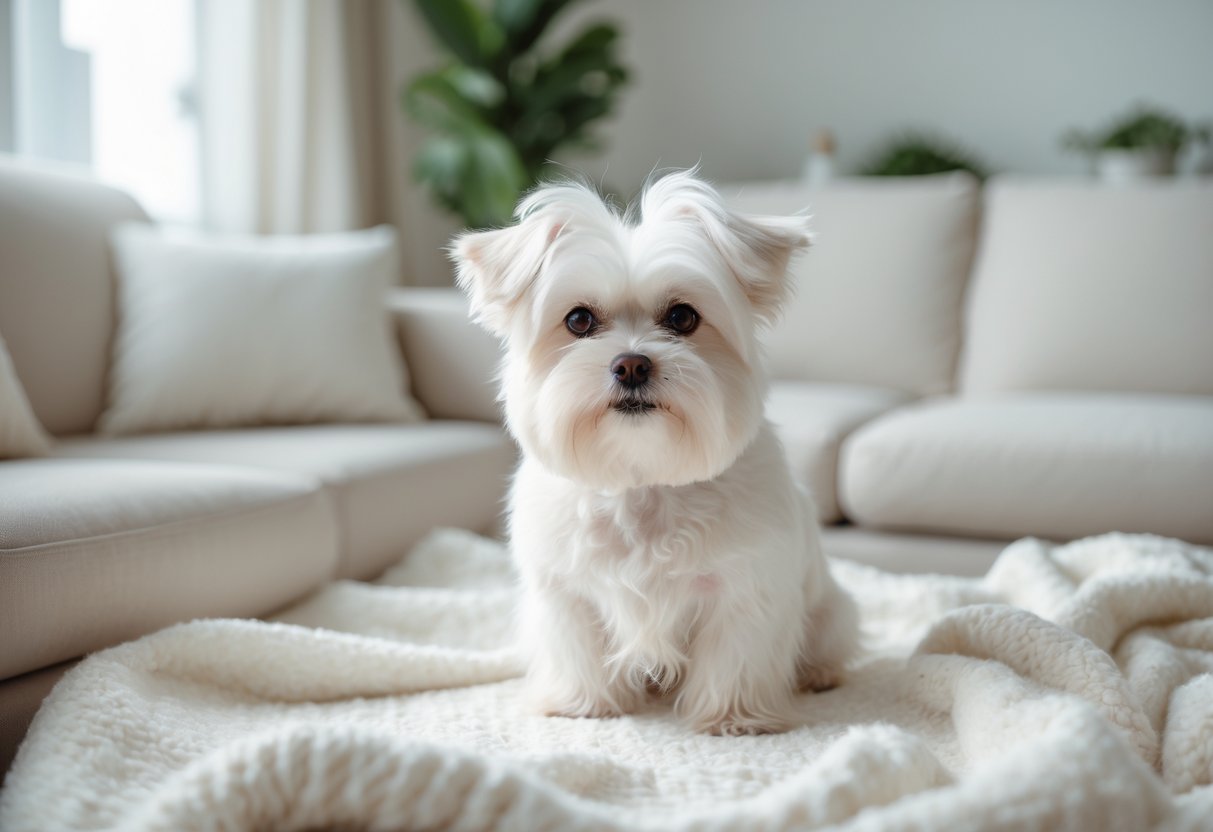
The Maltese is a small dog breed known for its gentle and calm nature. It is often described as affectionate and intelligent. This breed tends to bark less than many other small dogs.
Maltese dogs usually remain quiet, making them good companions for people who want a peaceful pet. They are also well-suited for apartment living because they do not create much noise.
This breed requires regular grooming to keep its coat clean and healthy. Overall, the Maltese offers a quiet presence without sacrificing friendliness or attention.
7) Scottish Terrier
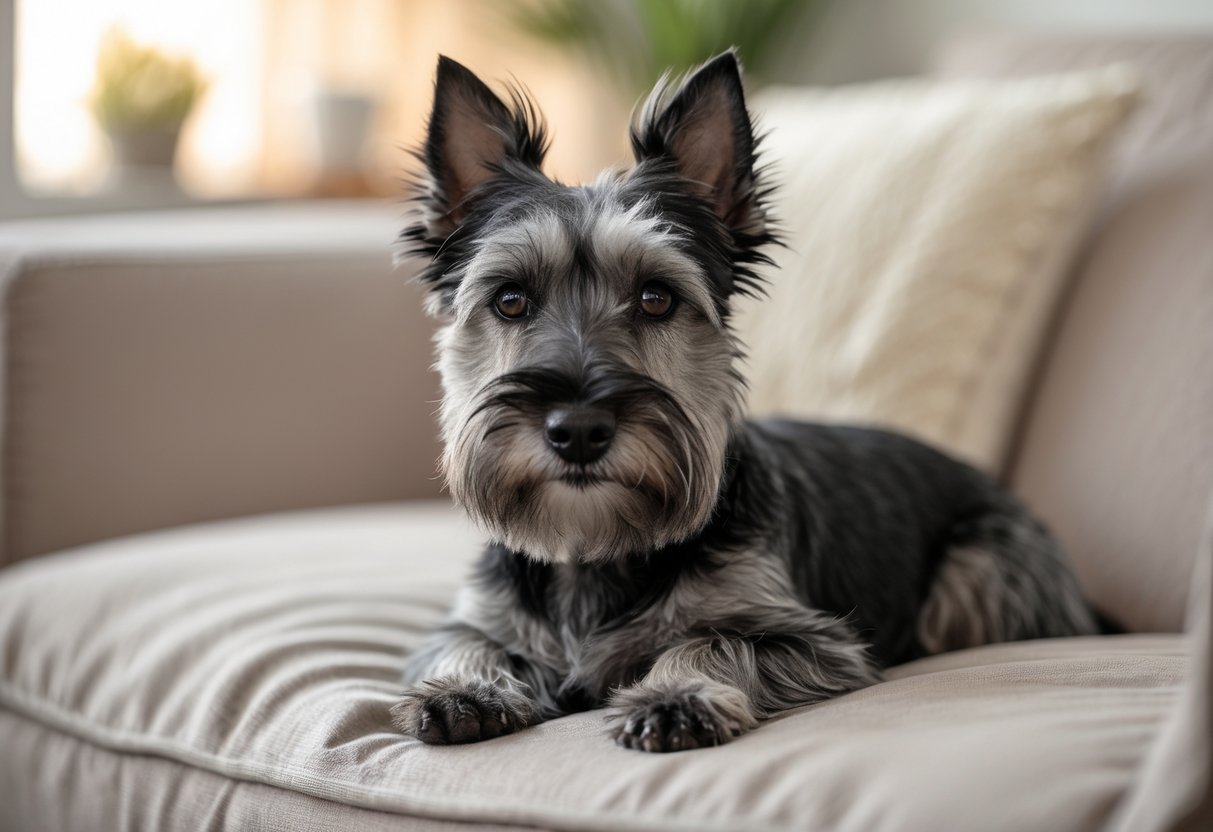
The Scottish Terrier is a small, sturdy dog known for its loyalty and intelligence. It is not a noisy breed and tends to bark only when necessary, like to alert its owner of strangers.
This breed makes a reliable watch dog without constant barking. Scottish Terriers have a calm nature but can be independent and stubborn at times.
They are best suited for owners who appreciate a quiet pet that still offers protection. Scottish Terriers do well in homes without very young children and enjoy regular exercise.
8) Brussels Griffon

The Brussels Griffon is a small dog breed known for its expressive face and big personality. It weighs between 5 to 15 pounds and stands about 7 to 10 inches tall.
Originally from Belgium, this breed was used to catch rats in stables. Over time, it became a popular companion dog.
The Brussels Griffon tends to be quiet and does not bark excessively. Its calm nature makes it suitable for apartment living.
This dog is loyal and affectionate but can also be lively and curious. It requires regular grooming because of its unique coat.
9) Poodle (Toy or Miniature)

The Toy and Miniature Poodles are known for being quiet dogs compared to other small breeds. They do bark, but usually only when there is a real reason. This makes them good pets for people who want a dog that does not bark too much.
These poodles are smart and easy to train. They respond well to commands, which helps control barking. Their size makes them suitable for apartment living and smaller spaces.
In addition, their hair sheds very little. This is helpful for people with allergies. Overall, both Toy and Miniature Poodles offer a calm and tidy pet option for those who prefer quieter small dogs.
10) Boston Terrier

The Boston Terrier is known for being a small dog that rarely barks. They usually only bark when they are excited or sense something unusual. This breed is not overly noisy, making them a good choice for people who want a quieter pet.
Boston Terriers are friendly and enjoy being around people. They do not have a high-pitched or constant yap like some small dogs. With proper training and early socialization, they learn when barking is needed and when it is not.
These dogs do not require much exercise and are easy to care for. They adapt well to different living spaces, including apartments. Their calm nature and low barking make them popular among small dog owners.
Understanding Low-Barking Dog Breeds

Low-barking dog breeds tend to share certain traits rooted in biology and behavior. Barking frequency can be influenced by their genetic makeup and the way they are trained. Environmental factors also play a role, but genetics and training are the most important elements in controlling noise.
Genetic Factors Influencing Barking
Some dog breeds naturally bark less due to their genetics. Breeds like the Basenji are known as “barkless dogs” because of how their vocal cords are formed. Other small breeds, such as the Italian Greyhound, have a calmer temperament that leads to less barking.
Genetics control not only the physical ability to bark but also instincts related to alertness and territorial behavior. Dogs bred for hunting or guarding tend to bark more to signal danger. In contrast, lap dogs or companion breeds are often quieter, as their role emphasizes companionship over protection.
How Training Impacts Noise Levels
Training can significantly reduce excessive barking even in breeds that tend to be vocal. Consistent methods like positive reinforcement encourage quiet behavior. For example, rewarding a dog when it stops barking teaches it to control noise.
Ignoring attention-seeking barking is also important. Dogs sometimes bark to get attention, and responding reinforces this behavior. Training should include teaching commands such as “quiet” to provide clear communication.
In addition, providing enough physical and mental stimulation can reduce barking caused by boredom or anxiety. A well-exercised dog is less likely to bark out of restlessness.
Benefits and Considerations for Quiet Small Dogs
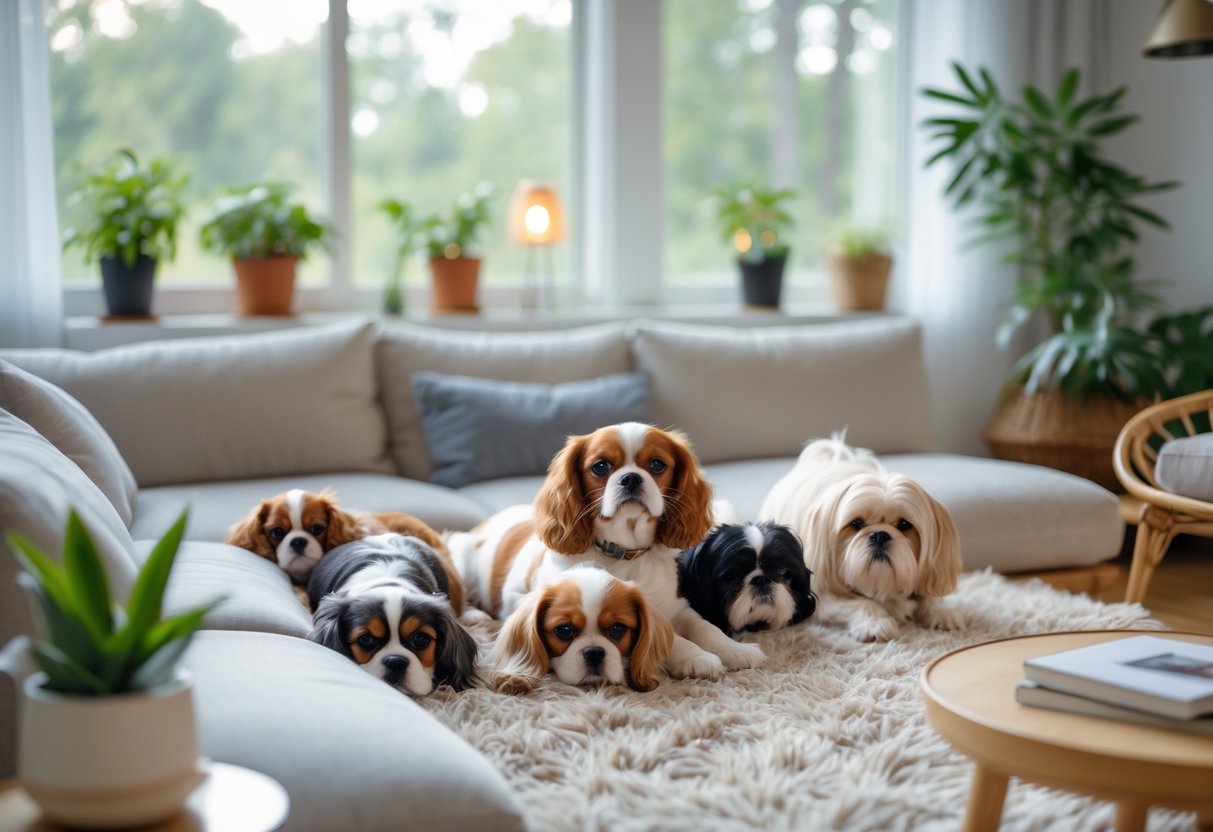
Quiet small dogs can make living spaces more peaceful and reduce noise-related stress. They often fit well into homes where noise must be kept low and communication can rely on subtle signals. However, choosing a quiet dog also means understanding how their calm nature impacts daily life.
Suitability for Apartment Living
Quiet small dogs are ideal for apartments and condos. Their low barking tendency helps prevent noise complaints from neighbors. These breeds usually adapt well to smaller spaces because they are less likely to become anxious or restless.
They tend to require less outdoor time for exercise compared to high-energy breeds. This makes them easier to care for in urban settings. Owners should still provide mental stimulation and short walks to keep them healthy and happy.
Some breeds may need gentle training to prevent occasional barking when feeling startled. Overall, their quiet nature supports a calm home environment, especially in buildings with shared walls.
Potential Communication Differences
Quiet small dogs use soft sounds or body language to express themselves. They rarely bark loudly or frequently, so owners must pay close attention to subtle cues like tail wagging, ear position, or gentle pawing.
Because they don’t bark to alert or warn often, owners should create alternative ways to monitor unusual activity, like using doorbells or cameras. These dogs may also be more sensitive to their owner’s emotions and require consistent interaction.
Training may focus on teaching the dog to signal needs clearly without loud barking. This difference in communication style suits people who prefer a calm, less noisy companion but demands patience and observation from the owner.
Frequently Asked Questions
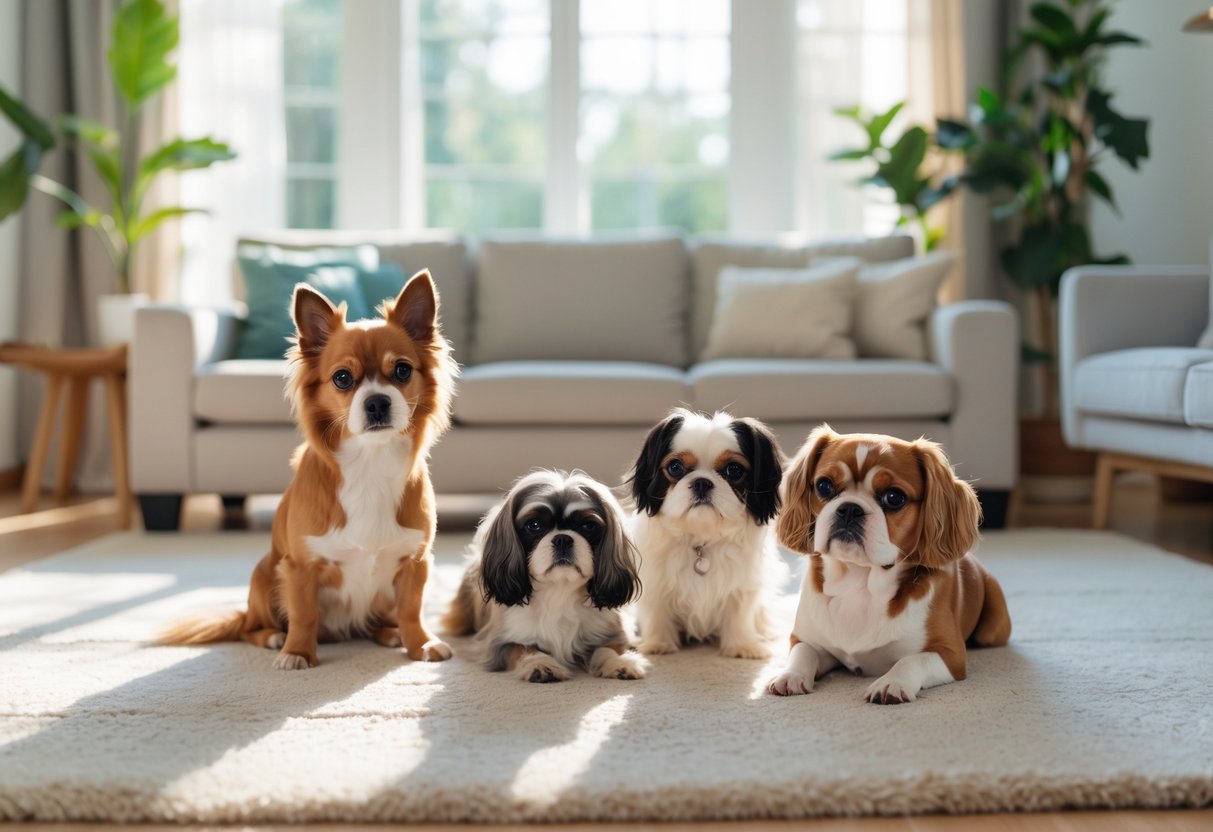
Some small dog breeds naturally bark less and suit apartment living well. Training and socialization also play important roles in reducing barking. Different breeds have unique traits that affect how often they vocalize or stay quiet.
What are some quiet small dog breeds suitable for apartment living?
Breeds like the Basenji, Shih Tzu, Cavalier King Charles Spaniel, Bichon Frise, and Chinese Crested are known for being quieter. These dogs adapt well to apartments because they don’t bark much and have calm temperaments.
How can you train a small dog to minimize barking?
Consistent positive reinforcement helps reduce unnecessary barking. Teaching commands like “quiet” and rewarding silence can make a big difference. Avoid yelling, as it can increase stress and barking.
Which small dog breeds are known for being particularly silent?
The Basenji is often called the “barkless dog” because it produces unusual sounds instead of barking. The Shih Tzu and Chinese Crested also rarely bark and are generally calm indoors.
Are there any health-related reasons why some small dogs bark less?
Some dogs bark less due to hearing issues or anatomical differences in their vocal cords. However, most quiet behavior comes from breed traits rather than health problems.
What characteristics should I look for in a small dog if I want a quieter pet?
Look for breeds with calm temperaments, low energy levels, and a history of being quiet at home. Avoid breeds known for being vocal or highly alert.
Can socialization and environment affect a small dog’s tendency to bark?
Yes, dogs exposed to a calm environment and socialized early tend to bark less. Stress, boredom, or lack of stimulation may increase barking in any breed, including quiet ones.
